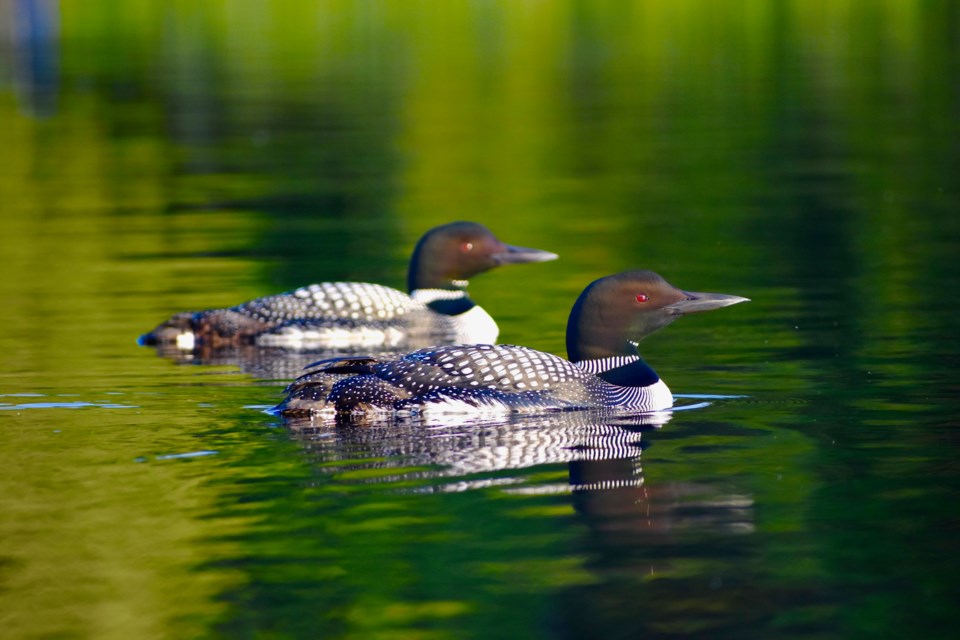NEWS RELEASE
COTTAGE LIFE TV
*************************
The common loon is undeniably an iconic bird in Canada, from its instantly recognizable and haunting call, which transports those who hear it right to cottage country, to its longstanding prominent position on our $1 coin, the loonie.
Despite its celebration in Canada, the common loon — identifiable by its distinct black and white pattern — is not as common a sight anymore. The population is now declining because loons have been producing fewer and fewer chicks for decades.
According to a soon-to-be-released Cottage Life TV original documentary special, Loons: A Cry from the Mist, approximately 25 per cent to 30 per cent fewer chicks are being produced across Southern Canada than they were a decade ago, which expert Dr. Doug Tozer, director, water birds and wetlands, Birds Canada, notes is a significant decline.
Due to the common loon’s long lifespan in the wild, on average 20 to 30 years, it can take decades before the decline is seen in the adult loon population.
Loons: A Cry from the Mist chronicles a year in the life of the common loon, examining the perils impacting the loon population — from global warming to boat traffic and big wakes disturbing their habitat. The special spotlights the reasons behind the decline in the number of chicks, why fewer and fewer young loons who survive the migration south do not subsequently return to their breeding grounds, and also outlines efforts to save Canada’s beloved water bird.
The loon, synonymous with cottage country, has been the longstanding icon for Cottage Life, and visitors to the Fall Cottage Life Show can catch a sneak peek of the documentary before its world premiere.
Exploring the issue further, Dr. Tozer is joining Cottage Life magazine’s editor and Cottage Life podcast host, Michelle Kelly, at the Fall Cottage Life Show on live stage on Saturday, Nov. 12 and Sunday, Nov. 13 at 11:30 a.m. both days to discuss the issue and provide tips on what Canadians can do to help.
To help protect loons, Dr. Tozer is sharing six steps anyone can take to support loon habitats and help this iconic species thrive:
- Keep shorelines wild by letting native wetland plants grow. Loons nest on the shoreline and natural shorelines provide shelter, protection from wakes, and food for both fish (their prey) and loons.
- Operate boats at a slower speed when close to wetlands and shorelines. Only use wake boats in the deepest part of the lake, at least 200 metres from shore and in eight metres of water or deeper. Wakes can wash eggs out of loon nests and stir up sediments obscuring the visibility of prey underwater, making it more difficult for them to feed.
- Steer clear of loons. As awe inspiring as it can be to see wildlife up close, it’s important to view any animals from a respectful distance. If adult loons become separated from their young, they can’t protect them, making chicks easy pickings for predators like gulls and ravens. Loons have identifiable behaviours that indicate when a person is too close, including starting to call; sitting up on the water, thrashing and fluttering their wings; or laying its head flat on the ground when it’s at the nest. Be sure to give the loons plenty more space if you observe these behaviours.
- Use non-toxic fishing tackle and dispose of trash, especially tackle and fishing line, responsibly. Loons and other wildlife can die from starvation when they become entangled in fishing lines and lead poisoning from ingested fishing tackle is a leading cause of adult loon mortality. Dispose of trash responsibly to ensure it doesn’t end up on shorelines or in bodies of water. Plus, making the jump to non-toxic fishing tackle is one of the easiest ways to protect loons and other wildlife.
- Reduce contributions to climate change by using less electricity and fossil fuels. Climate warming raises lake temperatures, causing more heavy metals to accumulate in wildlife tissues, including loons, contributing to their decline.
- Be an advocate for healthy loons and lakes. Get involved with a lake association, and participate in loon or lake monitoring, like the Canadian Lakes Loon Survey.
To learn more, visit the Fall Cottage Life Show from Nov. 11 to 13 at the International Centre in Mississauga. Tickets are available at cottagelife.com/shows. The world premiere of Loons: A Cry from the Mist airs Friday, Nov. 18 at 8 p.m ET/PT on Cottage Life TV.
*************************
